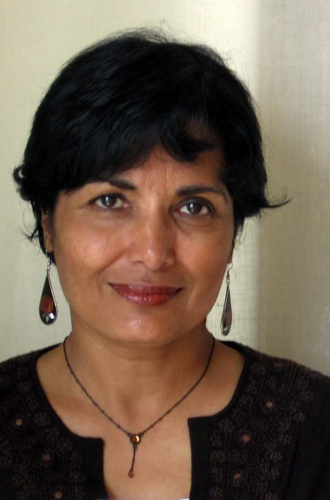-

-
Rasika M Harshey
Professor
Molecular Biosciences
Mary M. Betzner Morrow Centennial Chair in Microbiology (Holder)DNA transposition, Replicative repair, flagella motility and signaling, bacterial surface colonizationrasika@austin.utexas.edu
Phone: 512-471-6881
Office Location
NMS 2.118
Postal Address
2506 SPEEDWAY
AUSTIN, TX 78712-
We have two major research interests. (1) Repair of Mu DNA transposition events. Transposition is not complete until short gaps created in the target on either side of the transposed element are repaired, yet how this happens is still not known. We are currently elucidating the mechanism and regulation of this process. Transposable phage Mu has played a central role in the development of the mobile DNA element field. In vitro transposition assays, first developed for Mu, served as a blueprint for elucidation of the phosphoryl transfer chemistry in a variety of transposable elements. When the mechanism of HIV DNA integration was discovered to be similar to that of Mu, high-throughput integration assays modeled after the Mu in vitro system, led to the development and marketing of the HIV integrase inhibitor Raltegravir. The repair assays we are developing will be equally important for obtaining insights into this integral aspect of transposition, and should present a potent new target for drug development. Thus, knowledge of the repair process is not only necessary to fully understand the biology of transposition, but can be potentially used to block deleterious transposition events. (2) The flagellar motor as a sensor. In E. coli and Salmonella, chemosensory information from the environment is detected by chemoreceptors and transduced to the flagellar motor, modulating its CW/CCW bias, and enabling the bacterium to seek optimal habitats. Here, the motor is at the output end of the sensory response. However, in a large number of flagellated bacteria, the motor itself perceives a ‘surface’ signal, that informs the bacterium of its environmental niche. In response, the bacteria can decide to grow more flagella and move or ‘swarm’ over the surface, or secrete polysaccharides and make sedentary biofilms. These responses play important roles in bacterial infection, surface colonization, persistence and pathogenesis. We are currently elucidating this sensory mechanism. We are also studying why swarming bacteria have a higher tolerance to antibiotics, and using our knowledge of key motility mechanisms to design new antimicrobial targets.
-
2014 W. Choi, S. Jang and R. M. Harshey. 2014. The Mu transpososome and RecBCD nuclease collaborate in the repair of simple Mu insertions. PNAS, in press.
2013 R. Saha, Z. Lou, L. Meng and R. M. Harshey. 2013. Transposable prophage Mu is organized as a stable chromosomal domain of E. coli. PLoS Genetics. 9(11): e1003902.
2012 S. Jang. S.J. Sandler and R. M. Harshey. 2012. Mu insertions are repaired by the double strand break repair pathway of E. coli. PLoS Genetics. Apr;8(4):e1002642.
2011. A. Be’er and R. M. Harshey. Collective motion of surfactant-producing bacteria imparts superdiffusivity to their upper surface. Biophys. J. 101:1017-24.
2010 K. Paul. V. Nieto, W. C. Carliquist, D. F. Blair and R. M. Harshey. The c-di-GMP-binding protein YcgR controls flagellar motor direction and speed to affect chemotaxis by a 'backstop break' mechanism. Mol. Cell. 38: 128-139
2010 W. Choi and R. M. Harshey. DNA repair by a transposase: the cryptic endonuclease activity of phage Mu transposase is required for post-integration repair. Proc. Natl. Acad. Sci. USA. 107: 10014-10019
2010 M. Butler, Q. Wang and R. M. Harshey. Cell density and mobility protect swarming bacteria against antibiotic., Proc. Natl. Acad. Sci. USA. 107: 3776-3781
-



